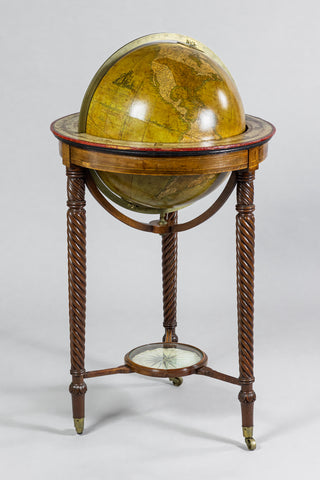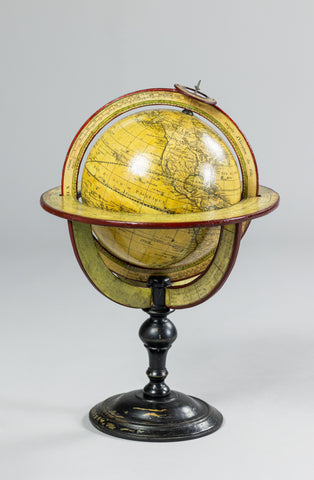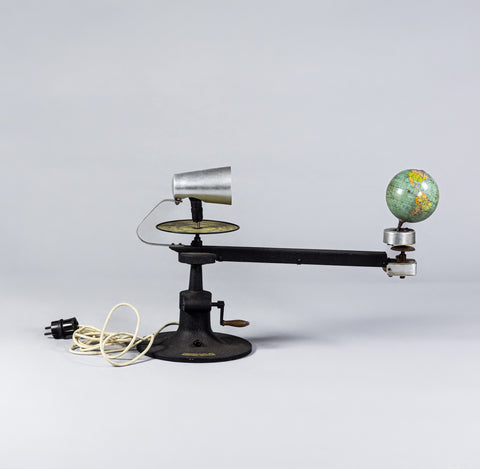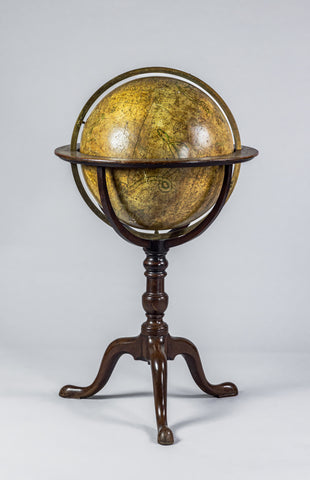
W. and T.M. Bardin (fl. 1783 – 1819) Sold by W. and S. Jones (fl. 1791 – 1859), The New British Terrestrial Globe containing all the latest discoveries…
The New British Terrestrial Globe containing all the latest discoveries… engraved from an accurate drawing by Mr. Arrowsmith
London, with pasted over-label “Sold by W & S. Jones, Holborn” ca. 1829
Diameter 18 in.; Height 47 in.
The globe made up of a set of 12 hand-colored engraved gores, new varnish, the gores slightly browned, and crackled from the old varnish, several restored cracks particularly along the equator, some infilled cracks in the Pacific. The Pacific marking the tracks of Cook. Brass meridian circle engraved on one face, papered horizon bar, supported on a three-legged spiral turned mahogany stand, with cross-stretchers supporting a compass, with facsimile papers and lacking pointer. Brass shoes with castors.
A fine Regency globe, elegant on its tall but simple stand. The Bardin Family was one of the foremost British globe makers of the late eighteenth to early nineteenth centuries. The firm was established in London by William Bardin (1740-1803) around 1780, when he collaborated with Gabriel Wright in producing 9-to-12-inch diameter globes. Their partnership ended around 1794/5, and the Bardin firm moved from Hind Court to 16 Salisbury Square, on the opposite end of Fleet Street in London. After a seven-year apprenticeship, William Bardin was joined by his son, Thomas Marriot Bardin (1768-1819) in 1790. The father-son team went on to produce their new line of “New British Globes” in various sizes. The company was later continued by Thomas Marriot Bardin’s daughter Elizabeth. William and Samuel Jones, who made optical instruments, came in around 1810 to assist in the marketing and sale of Bardin’s globes. This globe is dedicated to Sir Joseph Banks, then president of the Royal Society, and the dedication states that it is engraved from a map drawn up by Aaron Arrowsmith (1750-1823), a mapmaker of great repute.
We Also Recommend





